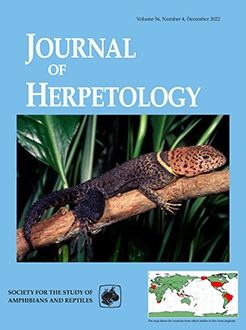Crocodilians occupy diverse aquatic and riparian habitats, and through their movements and ontogenetic niche shifts, link the flow of energy and nutrients between aquatic and terrestrial food webs. We analyzed the trophic ecology of African dwarf crocodiles Osteolaemus tetraspis and O. osborni at one site for each species in Cameroon by analyzing carbon and nitrogen stable isotope ratios. We hypothesized that Osteolaemus species inhabiting a perennial river would be primarily associated with aquatic food webs, whereas those inhabiting a small ephemeral stream would assimilate significant fractions of terrestrial-derived material into their biomass. We also hypothesized that Osteolaemus species would undergo ontogenetic trophic shifts, including changes in vertical trophic position (TP). We found that crocodiles in both systems assimilated material from both terrestrial and aquatic-based food chains, and therefore provide a trophic link between habitats. In the perennial river, aquatic gastropods, fish, and amphibians were estimated to have higher maximum feasible contributions to crocodile biomass than terrestrial invertebrates. Prey contributions to crocodile biomass in the ephemeral stream could not be estimated because model results suggested that at least one important prey had not been sampled. Even though isotopic overlap was high between juveniles and adults, and between sexes, ontogenetic shifts in TP were apparent in both Osteolaemus populations.
BioOne.org will be down briefly for maintenance on 17 December 2024 between 18:00-22:00 Pacific Time US. We apologize for any inconvenience.
How to translate text using browser tools
28 March 2023
Trophic Ecology of African Dwarf Crocodiles (Osteolaemus spp.) in Perennial and Ephemeral Aquatic Habitats
Nicole L. Smolensky,
Lee Fitzgerald,
Kirk O. Winemiller
ACCESS THE FULL ARTICLE

Journal of Herpetology
Vol. 57 • No. 1
March 2023
Vol. 57 • No. 1
March 2023




